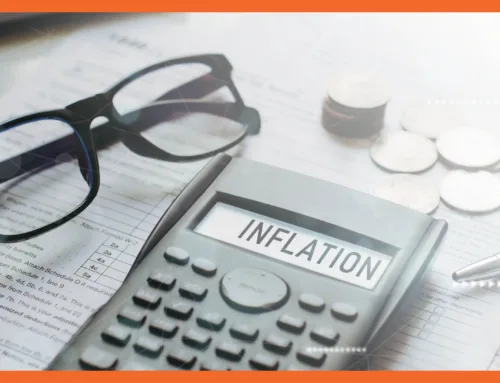REPAYING STUDENT LOANS
More than half of all college graduates have used student loans to pay tuition and other costs. So if the lingering bill for your education makes you nervous, know that you’re not alone in facing student debt and there are options that can make repayment easier.
If the money you borrowed came through the federal government, either as a direct loan or through the federally insured Federal Family Education Loan (FFEL) program, it also helps to know that there are a variety of ways to structure repayment that can make paying off your loans easier on the nerves and on the pocketbook.
Amazing Grace
The government does you one favor. You don’t get your first bill along with your diploma. You’ve got a six-month grace period on Stafford loans and nine months with Perkins loans from the date you graduate or are no longer enrolled at least half-time until your first loan payment is due.
What you don’t want to do is default, or fail to pay. If you default, you’ll be ineligible for future federal loans, your credit report and score will be damaged, your pay may be garnished, and your tax refunds withheld. You may also be sued.
Deferment, Forbearance, and Consolidation
If something happens that makes it hard for you to pay back your student loans, you may be able to postpone payment for a set period of time. You can apply to defer your loans, for example, if you’re in school at least half-time, if you take a parental leave from work, or if you enter a public service organization, such as the armed forces or the Peace Corps. Unemployment, temporary disability, and other events that may keep you from earning money can also make you eligible for deferment. If your loans are deferred, your payment schedule is halted, and the balance on subsidized Stafford loans doesn’t accumulate interest. Interest does accumulate on unsubsidized loans.
If you don’t have a valid reason for deferment but you still can’t afford to pay your loans, you can request a forbearance. If a forbearance is granted, you won’t have to make payments for a specified period, but your loans will continue to accumulate interest.
If you have more than one federal student loan, you have the option of consolidating the loans into a single Direct Consolidation Loan with a fixed interest rate and one monthly payment. This approach allows you to extend repayment up to 30 years, with monthly payments that are lower than the combined payments you are making on a number of different loans. Of course, the longer repayment period increases the total cost of borrowing by making you accrue more interest, but, at the same time, it makes it more affordable by making your monthly payments lower.
Repaying Federal Loans
There are several ways to repay federal Stafford loans. Each one fits a slightly different financial situation, so you need to think seriously about what you can afford when you pick a repayment plan. You can find more detailed information about these options at studentaid.ed.gov.
Remember that the best plan for you isn’t necessarily the one with the lowest monthly payments—or the one with the highest payments and the shortest term, for that matter. Think about what you can afford now, and what you can reasonably expect to pay in the future. You’ll find there are slight differences among the longer-term repayment options. Some of them include provisions that allow the balance of your loan to be discharged or forgiven under certain circumstances.
And when you choose a repayment plan, you’re not making an irrevocable decision. You can always switch plans if you need or want to. It’s generally easy to qualify provided you are up to date with your payments under your existing plan.
Standard repayment plan – This plan requires you to make fixed payments of at least $50 a month for a set period of time up to ten years. The amount of each payment and the time that repayment takes depends on how much you’ve borrowed. This plan will probably let you pay back your loan quickest, and cost you the least overall, provided you have the money to keep up with the payments. One warning sign is if your monthly payments are greater than 8% to 10% of your gross monthly income. If they are, you might consider one of the more flexible but longer alternatives. You can always prepay your loan at any time if you’re able to afford it.
Graduated repayment plan – This plan might be the best choice for you if you’re not making a lot of money right now, but you’re expecting to have a higher income in the near future. Your payments are due over a fixed period of up to ten years. Your payments start out small and increase, generally every two years. You’ll never pay less than the interest that’s due. This plan may cost a little more overall than the standard plan.
Extended repayment plan – This plan requires fixed or graduated payments over a term that lasts up to 25 years. You must owe more than $30,000 in loans you’ve taken either from private lenders through the federally insured Federal Family Education Loan (FFEL) program or through the Direct Loan program to qualify for this plan. If you have both types, you can’t combine them to reach the $30,000 threshold. While your payments are lower than with a standard or graduated plan, this method will cost you more overall because you are paying interest for a longer time.
Income-contingent repayment plan – This plan applies to federal Direct Loans and sets your monthly payments based on your income, which can give you some security if you have a volatile cash flow. What you pay each year rises or falls based on what you make, and there’s no set minimum payment. If your payments aren’t large enough to cover the interest that’s due, the unpaid amount is capitalized and added to your principal. You can take up to 25 years to repay under this plan. After that, any amount that’s still unpaid may be discharged, although you may have to pay income taxes on the amount that you’re not required to pay. Graduate and professional school borrowers may use this plan as well.
Income-based repayment plan – This plan bases your monthly repayment amount on your income and family size and limits what you must pay annually. After you make payments for 25 years, you may qualify to have the remaining balance canceled. In addition, if you work in a qualifying public service job, you may qualify to have your loan forgiven.
This plan has some features in common with a program that began in 2007 that allows your loans to be forgiven if you work in a broadly defined public interest job, including teaching and some medical and legal work. In that case, if you make payments for ten years, any remaining balance is forgiven and no tax is due on the unpaid amount. To participate, though, you must move any loans you took through the FFEL program to the Direct Loan program.
In addition, if you have an existing FFEL loans, you may be eligible for the income-sensitive repayment plan. This plan adjusts your monthly payments every year, based on your annual income. As your income goes up, so do the repayment amounts. The repayment period for this plan lasts up to 10 years, though it may be extended to 15 years under special circumstances. No new FFEL loans are being made, however.
You have ten years to pay off a Perkins loan, by making the payments to your school or the agent it selects. There are no repayment options. The amount you owe each month, which must be at least $40, is based on the total amount you owe.
Parents or independent students with Parent Loans for Undergraduate Students (PLUS) generally must begin repayment immediately after the loan has been disbursed.
Keeping Up Online
If you want to get the latest information about your Stafford loans, from finding out the current interest rates to calculating total costs, you’ll find a helpful guide called “Funding Education Beyond High School” and other useful resources at studentaid.ed.gov. To get information on the amount you owe and the name of the loan servicer where you make your payments, go to the National Student Loan Data System (NSLDS) at studentaid.gov/manage-loans or call 800-4-FED-AID. There’s no comparable reference site for private college loans you may have taken with banks or other commercial lenders.
Handling Other Loans
If you’ve taken loans from private lenders to pay for your education, keeping track of what you owe and making your payments on time can be an even greater challenge. That’s because each loan’s term, repayment schedule, and lender may vary, and there is no single source you can turn to for an overview of what you owe.
One solution may be to consider serialization or consolidation if those are options your lenders will agree to. With serialization—if you qualify—you arrange to make the payments on a number of different loans to a single address. The loans themselves aren’t affected. With consolidation, different student loans with varying interest rates are combined into a single loan with a single set of terms, as they are when you consolidate federal loans. Your monthly payment is adjusted to match the new loan.
Ask your financial aid office or lenders for more details about consolidating private loans.
This article has been republished with permission. View the original article: Repaying Student Loans.














